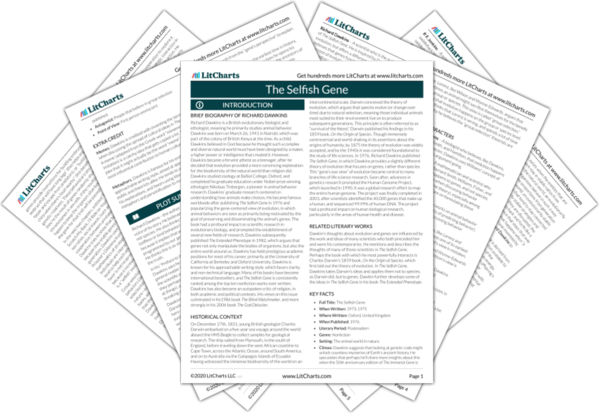Dawkins explains that eggs are rarer than cells, meaning that generally, males compete for female mates, and not vice versa. In males, the genetic benefit of blending in with one’s surroundings to hide from predators is outweighed by the benefit of standing out to attract a mate. Similarly, among females, the genetic benefit of being pickier about mates is higher than mating more freely. In each case, the behavior persists because it’s the strategy that keeps the most genes alive. Dawkins believes his thorough examination of mating behaviors shows that the strongest and most consistent explanation for why they happen is selfish genes.


